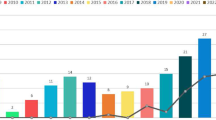Abstract
The Laryngectomee patient has damage in vocal cord and leads to loss of speech; therefore, patient uses electrolarynx (EL) device during speech for speech clarity. The EL device consists of a vibrator placed over the vocal surface during speech, and the speech signal modulates with the vibrator signal for clarity in speech. However, vibration from the EL device produces a constant signal and produces less speech clarity during various environmental conditions such as indoor, outdoor and populated area. In this paper, the above problem is alleviated by generating automated vibration signal with manual tuning for speech clarity in different environmental conditions. The proposed Smart Larynx (SL) device replaces the electrolarynx (EL) which consists of a Smart Phone and Vibrator App with frequency ranging from 250 to 450 Hz. From the experimental result, the speech attains about 85% clarity of normal speech after processing with Radial Dilation Wavelet Transform algorithm. The SL device validates the clarity of the speech based on monosyllable, bisyllable and trisyllable in Tamil Language.




























Similar content being viewed by others
References
M. Blšták, V. Rozinajová, Machine learning approach to the process of question generation. In: International Conference on Text, Speech, and Dialogue, pp. 102–110 (2017)
R. Bhat, J.B. Singh, Investigations of the effect of nonlinearly generated excitations on the quality of the synthesized alaryngeal speech, Indian J. Sci. Technol. 10(18) (2017)
A. Ferreira A, Implantation of voicing on whispered speech using frequency-domain parametric modelling of source and filter information, 2016. In: International Symposium on Signal, Image, Video Communications ISIVC 2016, pp. 159–166 (2017)
A.K. Fuchs, M. Hagmuller, G. Kubin, The new bionic electro-larynx speech system. IEEE J. Sel. Top. Signal Process. 10(5), 952–961 (2016)
M. Kim, B. Cao, T. Mau, J. Wang, Speaker-independent silent speech recognition from flesh-point articulatory movements using an LSTM neural network. IEEE/ACM Trans. Audio Speech Lang. Process. 25(12), 2323–2336 (2017)
B. Krstajic, Z. Uskokovic, Adaptive noise cancelling with new versus LMS algorithm. IFAC Proc. 34(3), 93–98 (2001)
W. Li, L. Guo, Design and preliminary evaluation of electrolarynx with F0 control based on capacitive touch technology. IEEE Trans. Neural Syst. Rehabil. Eng. 26(3), 629–636 (2018)
D.D. Mehta, J.H. Van Stan, R.E. Hillman, Relationships between vocal function measures derived from an acoustic microphone and a subglottal neck-surface accelerometer. IEEE/ACM Trans. Audio Speech Lang. Process. 24(4), 659–668 (2016)
K.F. Nagle, Surface EMG control of fundamental frequency modulation using submental muscles: enhancing alaryngeal prosody. In: Conference on Motor Speech (2018)
M.L. Ng, T. Lee, N. Yan, Improving the sound quality of an electronic voice box. In: Proceedings of 2013 6th International Conference on Biomedical Engineering Informatics, BMEI 2013, pp. 368–372 (2013)
H.J. Niu, M.X. Wan, S.P. Wang, H.J. Liu, Enhancement of electrolarynx speech using adaptive noise cancelling based on independent component analysis. Med. Biol. Eng. Comput. 41(6), 670–678 (2003)
K. Ooe, K. Sakurai, S. Mimaki, Development of myoelectric control type speaking valve with low flow resistance. In: SPIE Proceedings, Micro + Nano Materials, Devices and Systems, vol. 9668 (2015)
P.C. Pandey, S.S. Pratapwar, P.K. Lehana, Enhancement of electrolaryngeal speech by reducing leakage noise using spectral subtraction with quantile based dynamic estimation of noise. In: Proceedings of 20th International Congress on Acoustics, pp. 3029–3032 (2004)
I.W. Selesnick, Wavelet transform with tunable Q-factor. IEEE Trans. Signal Process. 59(8), 3560–3575 (2011)
I. Selesnick, I. Bayram, Frequency-domain design and implementation of overcomplete rational-dilation wavelet transforms. IEEE Trans. Signal Process. 57(8), 2957–2972 (2009)
H.R. Sharifzadeh, I.V. McLoughlin, F. Ahmadi, Reconstruction of normal sounding speech for laryngectomy patients through a modified CELP codec. IEEE Trans. Biomed. Eng. 57(10), 2448–2458 (2010)
H.R. Sharifzadeh, A. HajiRassouliha, I.V. McLoughlin, I.T. Ardekani, J.E. Allen, A. Sarrafzadeh, A training based speech regeneration approach with cascading mapping models. J. Comput. Electr. Eng. 62, 601–611 (2017)
T.G. Tuttle, B.D. Erath, Design and evaluation of a mechanically driven artificial speech device. J. Med. Device 12(1), 011002 (2017)
Author information
Authors and Affiliations
Corresponding author
Ethics declarations
Ethical Approval
In India, many pharmaceutical companies, research institutes, contract research organisations and medical colleges are involved in clinical trials and bioequivalence and bioavailability studies as per E6 Guidelines.
Informed Consent
Informed consent was obtained from all individual participants included in the study.
Additional information
Publisher’s Note
Springer Nature remains neutral with regard to jurisdictional claims in published maps and institutional affiliations.
Rights and permissions
About this article
Cite this article
Malathi, P., Suresh, G.R., Moorthi, M. et al. Speech Enhancement via Smart Larynx of Variable Frequency for Laryngectomee Patient for Tamil Language Syllables Using RADWT Algorithm. Circuits Syst Signal Process 38, 4202–4228 (2019). https://doi.org/10.1007/s00034-019-01055-8
Received:
Revised:
Accepted:
Published:
Issue Date:
DOI: https://doi.org/10.1007/s00034-019-01055-8




